Others
LAKHPATI DIDI SCHEME
A Milestone in Women’s Economic Upliftment
Posted On:
29 AUG 2024 11:52AM
Self-help groups (SHGs) have fostered collective action and mutual support across the nation while also serving as conduits for crucial financial literacy, skill development, and livelihood assistance. Notably, the focus has shifted beyond mere social and financial inclusion, now aiming to empower SHG members to pursue entrepreneurial ventures. Their inherent skills and potential position them well to move towards higher income brackets. The government is now actively supporting this transition and initiatives like Lakhpati Didi.
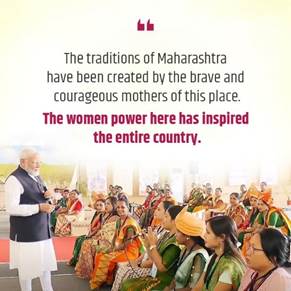
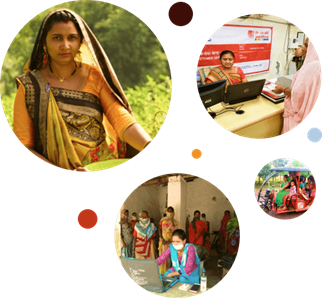
The Prime Minister, Shri Narendra Modi, participated in the Lakhpati Didi Sammelan in Jalgaon, Maharashtra, on August 25, 2024, where he handed over certificates and felicitated new Lakhpati Didis. This was celebrated across the nation where 11 Lakh new Lakhpati Didis were felicitated. Since the inception of the Lakhpati Didi Initiative, more than one crore SHG women have already been made Lakhpati Didis, and the government has set a target of enabling three crore Lakhpati Didis.[1]
A Lakhpati Didi is a Self-Help Group member who earns an annual household income of Rupees One Lakh (Rs. 1,00,000) or more. This income is calculated for at least four agricultural seasons and/or business cycles, with an average monthly income exceeding Rupees Ten Thousand (Rs. 10,000), so that it is sustainable. Lakhpati initiative facilitates diversified livelihood activities, by ensuring convergence across all Government departments/ Ministries, Private sector and Market players. The strategy includes focused planning, adequate and timely support on assets, finance, market, technology etc., implementation and monitoring at all levels.[2] To know about the State Wise Targets, click here.
Steps taken to enable SHG members to become Lakhpati Didis
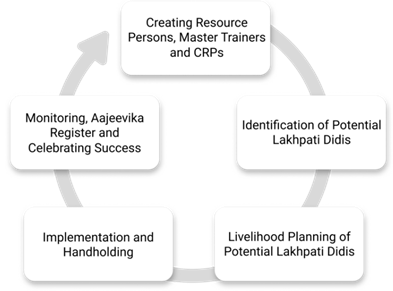
A five step process has been taken up by the Ministry for enabling Lakhpati Didis, that includes the following:
- Identification of Potential Lakhpati Didis
- Creating a pool of Master trainers and Community Resource Persons
- Cascading Training and Capacity building of various Stakeholders such as SHGs and its federations, Community Resource Persons, Master Trainers, and the Staff/experts supporting this initiative
- Training, Capacity Building and exposure visits of potential Lakhpati Didis on various Livelihood Models and making accessible relevant resource documents for self-learning
- Preparation of Lakhpati Plan of the identified households, consolidation of the plans and development of product and/ or service clusters, value chain interventions, establishing linkages with various stakeholders, schemes of government, private sectors partnerships etc.
- Mapping of Community Resource Persons with identified Didis for Handholding support and linkages.
- Digital Aajeevika Register for reporting the livelihood activities and income periodically (Six Monthly linked to Agriculture season and/ or on completion of business cycles).
Criteria for Identifying Potential Lakhpati Didis
When identifying the potential Lakhpati Didis, equal opportunity is given to all categories of SHG (social and economic). Through consultative process, the potential Lakhpati Didis are identified.
Topics Covered in the Training for Community Resource Persons on Lakhpati Didi
The Community Resource Persons are the ministry's feet on the ground and extended hands for preparing the Lakhpati didi Livelihood Plan. A two-day comprehensive training programme is designed for them, considering the Knowledge and Skills that will be required to deliver their role.
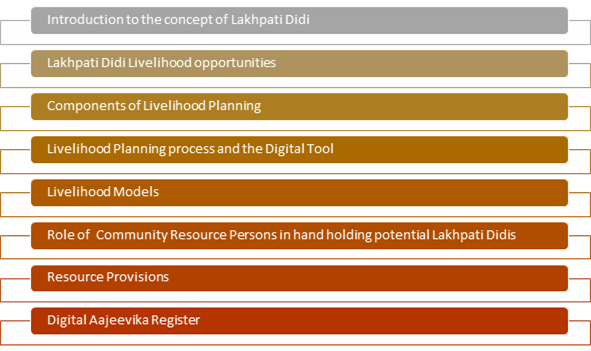
(Link to the Training Materials on Lakhpati Didi for Community Resource persons: Download here)
Strategy for Enabling Lakhpati Didis
The four key strategies for universal coverage of Self-Help Group households into livelihoods and enabling Lakhpati Didis are:
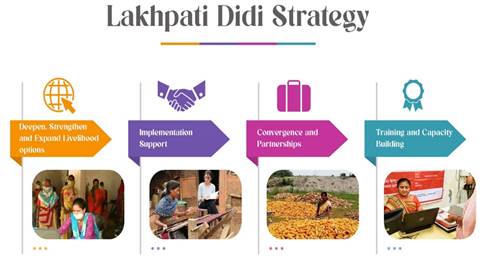
Programmes/Projects Helpful for Enabling Lakhpati Didis
The DAY-NRLM has multiple interventions focusing on the livelihood augmentation of women Self Help Group Members. Key interventions that can supplement the Lakhpati Didis:
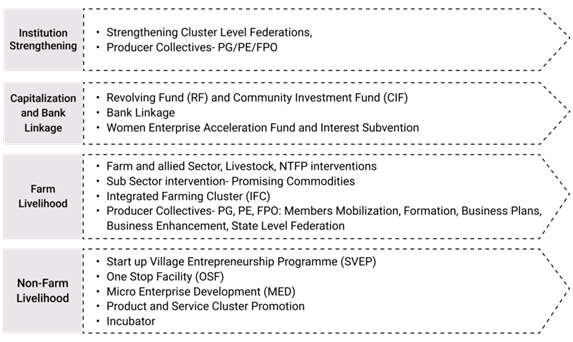
Financial Support Available to Self Help Groups and its Members
The Lakhpati Didi scheme offers a multifaceted approach to economic empowerment through various financial instruments designed to enhance access to credit, encourage entrepreneurship, and promote financial inclusion among women Self Help Groups (SHGs) and individual entrepreneurs across the country.
Capitalization Support
- Revolving Fund: Rs. 20,000 to Rs. 30,000 per eligible SHG to catalyze the process of internal lending and to enable them to meet the immediate credit needs of the members.
- Community Investment Fund (CIF): This financial support is provided only to SHGs and their federations to advance loans to enable members to undertake socio-economic activities as per micro-credit/ investment plans. The maximum amount admissible for Community Investment Fund is Rs. 2.50 lakh per SHG.
Bank Loan
- Collateral-free bank loan up to Rs. 20 lakh for SHGs.
- Interest Subvention: Interest subvention, to cover the difference between the Lending Rate of the banks and 7%, on all credit from the banks/ financial institutions availed by women Self Help Groups, for a maximum of Rs. 3,00,000 per Self Help Group.
- Overdraft Facility: Every Self Help Group women member having a Jan-Dhan Account is eligible for an Overdraft (OD) limit of Rs. 5,000.
Women Enterprise Acceleration Fund
It is a dedicated fund created to catalyze and make available medium term to long term debt financing to SHG women entrepreneurs to invest in viable enterprises, start new businesses, grow and scale up existing enterprises.
1. For individual enterprises
- Credit Guarantee Support for enterprises for loans up to Rs. 5 lakh for a maximum period of 5 years.
- Interest Subvention for loans up to Rs. 1.5 lakh for a maximum duration of 3 years.
2. For enterprise collectives/ FPOs
- Collateral Support to Enterprise Collectives/ FPOs up to 50% of the total credit extended (or up to Rs. 2 crore, whichever is less) to lending institutions.
- Reimbursement of credit guarantee fee: Charges on maximum loan amount of Rs 5 crore for a period of 5 years to the lending institutions.
- Incentives to women collectives: Up to a maximum of Rs 25 lakh or 10% of the credit borrowed will be provided to the collective.
Lakhpati Margdarshika
Lakhpati Margdarshika, is a guiding document for the mission staff, community organizations, community resource persons, SHG Didis and other stakeholders. It details the following aspects in the Lakhpati Didi initiative.
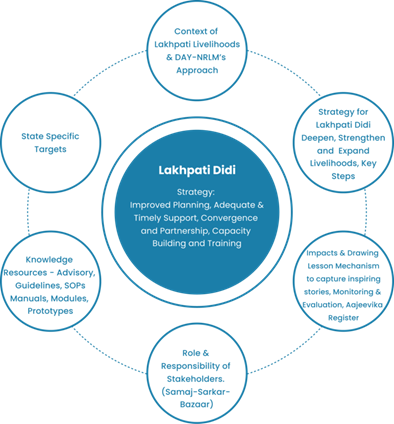
Capacity Building of Lakhpati Didis
A Cascade Training Strategy is adopted to enable training and handholding of Potential Lakhpati Didis (SHG members) from across all States and Union Territories in India. The cascade training begins by the identification of a team of Experts who train Resource Persons from across India on the Lakhpati Didi Strategy and associated topics relevant to enabling SHG members to become Lakhpati Didis. The Resource Persons further train the Master Trainers in the States and Union Territories, who would primarily be State Resource Persons and identified by the State Units. These Master Trainers further train the Community Resource Persons who are selected by State Missions for training and handholding of the identified Potential Lakhpati Didis.
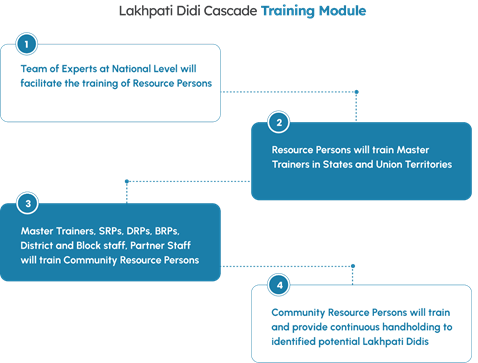
Progress under Lakhpati Didi initiative
The Mission in its endeavour to empower the SHG women, have made concerted efforts in collectivization of women, strengthening their federations, capacitating them with knowledge and skills for livelihood intervention, financing and credit support etc. for the livelihood augmentation of the SHG women.
During the Financial Year (FY) 2024-25, Government of India (GoI) has proposed an increased budgetary outlay of Rs. 15047.00 Crore for the DAY-NRLM. This will facilitate in increased interventions for livelihoods of SHG members. These interventions will not only empower the SHG members economically but will also facilitate women led development.[3]
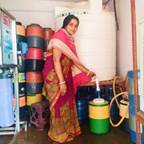
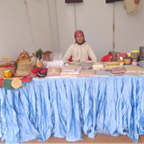
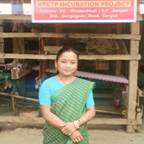
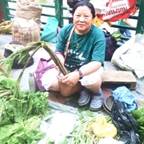
Some of the key achievements made under the Mission as on July, 2024 are:
Outreach
The Lakhpati Didi initiative has achieved significant coverage across various administrative divisions in India. The Mission has covered 7132 blocks spread over 742 districts across all States and UTs (except Delhi and Chandigarh) under the intensive strategy. This wide reach demonstrates the initiatives extensive implementation across the country.
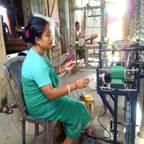

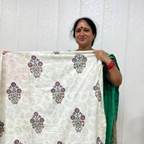
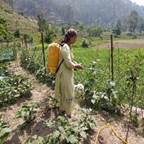
Progress
The Lakhpati Didi initiative has significantly impacted rural communities by mobilizing a large network of trained individuals and potential beneficiaries. The scheme has developed 6,611 Master Trainers and 3 lakh Community Resource Persons (CRPs) who are crucial in guiding and supporting rural women towards financial independence. Furthermore, the scheme has identified and nurtured 2.47 crore Potential Lakhpati Didis (PLDs) across the country. Additionally, 44 lakh individuals have been registered in the Digital Aajeevika Register, further enhancing the scheme's digital outreach and support mechanisms. This collective effort underscores the transformative potential of the scheme in empowering women and fostering sustainable livelihoods.
Success Stories
|
Dulesshwari Devangan[4]
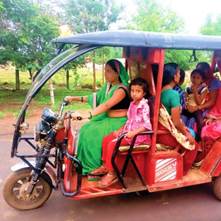
State : Chhattisgarh
District : RajnandGaon
Block : DongarGaon
Village : Konari
Self Help Group : Sandhya Mahila SHG
Livelihood Activities : e-Riksha Driver
Lakhpati Didi Journey
Dulesshwari Devangan, faced with the challenge of running a small shop that proved insufficient for supporting her family, took a transformative step by joining a Self-Help Group (SHG). As the appointed e-Book Keeper for the group, she proactively sought livelihood opportunities to improve her financial situation. Through dedicated efforts and participation in livelihood training programs, Dulesshwari secured a loan of Rs. 50,000 from the E-Rikshaw Scheme.
This financial boost not only provided her with the necessary capital but also instilled confidence and exposure beyond her immediate environment. Dulesshwari’s journey became a beacon of encouragement for entrepreneurship, earning her recognition in society. Presently, she enjoys a sustainable livelihood, earning between Rs. 12,000 and Rs. 15,000 per month. Dulesshwari’s story exemplifies the transformative power of self-help groups, training initiatives, and entrepreneurial endeavors in elevating individuals and fostering sustainable livelihoods.
|
Bindhu Debnath[5]
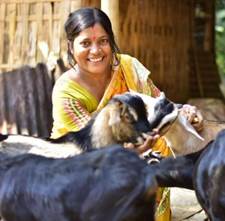
State : Tripura
District : South Tripura
Block : Satchand
Village : Magurchara
Self Help Group : Nari Shakti Mahila Dal
Livelihood Activities : Goat rearing, Farming and Winter wears
Lakhpati Didi Journey
In a vibrant corner of India, the Nari Shakti Mahila Dal thrived. United in a self-help group, they unlocked financial independence through loans, starting new livelihoods. Unrelenting in their pursuit of knowledge, they sought support from the DAY-National Livelihood Mission Tripura, mastering scientific livestock management. But their ambitions soared higher.
Diversifying their income sources, they embraced multiple livelihoods, building a shield against adversity with an average monthly income of Rs. 25,000-30,000, they stand tall, an inspiration to countless women, a testament to the transformative power of collective action and empowerment. Their story, a beacon of hope, whispers – the future belongs to those who dare to rewrite it.
|
Lakhpati Didi serve as an inspiration to the community, not solely for their income, but for their transformation journey through adopting sustainable livelihood practices (farm or non-farm or service), effectively managing resources, and achieving a decent standard of life.
References
LAKHPATI DIDI SCHEME
****
Santosh Kumar/ Ritu Kataria/Apoorva Mahiwal
(Explainer ID: 152064)
आगंतुक पटल : 17138
Provide suggestions / comments